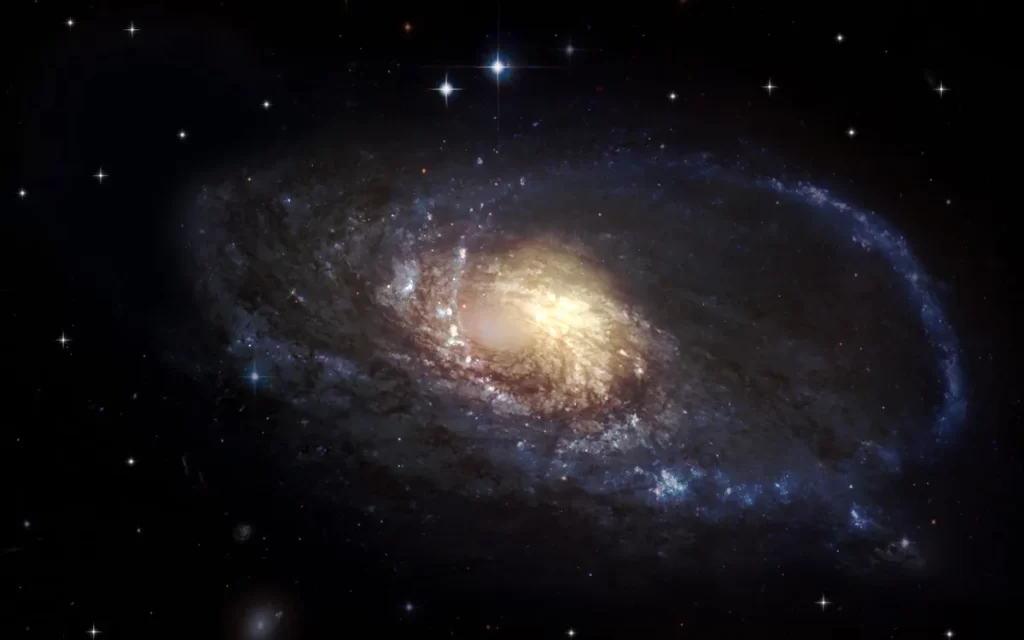Physicists are still chasing the dream of Albert Einstein and Stephen Selling to capture the workings of the complete universe in a single equation.
The Hypothesis of Everything is an overarching hypothetical system that would clarify the material science of the whole universe in a single condition. But binding together hypotheses that characterize the large-scale cosmological structure of the universe with those that portray the minute quantum world of the subatomic particles has been a challenge for over a century.
Figuring out such an all-encompassing hypothesis was the dream of two amazing physicists, Albert Einstein and Stephen Selling. But in spite of the fact that conditions that portray the universe on the largest and littlest scales have gotten to be more exact over the decades, they still do not join together to supply a total picture of the physical world. The circumstance is so maddening that a few of the most noteworthy physicists of nowadays concede that they might not live to see it all drop into put. Selling himself had given up on the seek for a Hypothesis of Everything some time recently his passing in 2018.
Cambridge College astrophysicist Christopher Reynolds concedes that Einstein’s sense of “aesthetics for the universe” may be annoyed by the “complex and messy” nature of current endeavors to figure out the rules of the universe. Whereas the famous German-born scholar was able to typify the workings of the world on the expansive scale, where the rules of gravity rule preeminent, within the slick E = mc^2 (a streamlined shape of an condition that appears vitality is rise to to mass times the speed of light squared), things started to disintegrate when physicists endeavored to accommodate his hypothesis of common relativity with quantum material science, which portrays the rules that oversee the world on the littlest scales.
“Standard material science right now really has two legs to it,” Reynolds told Space.com. “One of them is the Standard Demonstrate of molecule physics. Which could be a hypothesis that clarifies the properties of matter. But it doesn’t clarify gravity, which is the other leg.”
Gravity versus quantum field
The Standard Demonstrate of molecule material science is the establishment of quantum mechanics that depicts the world of iotas and their constituent particles such as the quarks and gluons, that make up protons and neutrons in nuclear cores and electrons that circle them. The Standard Demonstrate clarifies three of four principal strengths that administer the common world: the electromagnetic drive that holds particles and particles together through the interaction of their electrically charged components, the solid atomic drive which ties rudimentary particles called quarks into more complex protons, neutrons and electrons (and along these lines into atoms), and the powerless atomic drive dependable for radioactive rot.
These powers are a result of molecule intuitive, Michael Duff, an Emeritus Teacher in hypothetical material science at Royal College London, told Space.com. A photon traded between two electrons produces the electromagnetic drive, the W and Z bosons clarify the solid and powerless atomic powers. But attempt clarifying gravity by collaboration particles, and you get to a point where the math goes astray, Duff said.
“Concurring to Einstein, it’s the geometry of space and time which is mindful for the gravitational drive,” Duff told Space.com. “You can inquire yourself whether gravity perhaps might be a result of a particle called the graviton. Which works very well to a certain degree. But once you attempt to form a full quantum hypothesis of gravitons, it goes appallingly off-base. Your answers, which ought to be limited, turned out to be infinite.”
On the huge infinite scales, where the rules of Albert Einstein’s common relativity coordinate perceptions, quantum standards do not appear to apply. The same happens when one looks for the standards of gravity within the microworld of subatomic particles.
Duff, who has went through most of his grown-up life attempting to accommodate the two hypothetical systems, portrays their inconsistency as “the catastrophe of the 21st century.”
The travel to sort out this “catastrophe” begun a hundred a long time prior, and Duff, presently 73, admits that he may not see the day when the “rules of chess” as he calls it, are at last split and the Hypothesis of Everything is complete.
“I’m not anticipating it anytime before long,” Duff said. “I think the key word is persistence. It’s getting to take a long time, a part of more investigate some time recently we get there, that’s my figure.”
Indeed some time recently Albert Einstein turned his well known brain to the Hypothesis of Everything, his counterparts Theodor Kaluza and Oskar Klein endeavored to wed his hypothesis of common relativity with James Receptionist Maxwell’s hypothesis of electromagnetism, which within the late 19th century had given an overarching clarification for the two primary powers known at that time: attraction and the electrical constrain.
To make their hypothesis work, Kaluza and Klein had to design a world that looked exceptionally distinctive from what we see around us. They had to include a fifth measurement to our three-dimensional space also time. This fifth measurement, be that as it may, was twisted up and infinitesimal, a minor circle that we cannot see on the level of way of life. was this hypothesis that Einstein endeavored to advance create into a bound together field hypothesis, which would portray all principal strengths, counting gravity, and the connections between rudimentary particles in terms of a single hypothetical system without the require for quantum material science. His endeavor eventually fizzled. Since at that point things have as it were gotten more complicated. Electromagnetism was superseded by the more complex quantum mechanics, which Einstein, agreeing to reports, never completely acknowledged because it appeared as well “outlandish.” In addition, the number of measurements of the universe required for the advancing Hypothesis of Everything (now and then called quantum gravity) to work, has more than multiplied.

